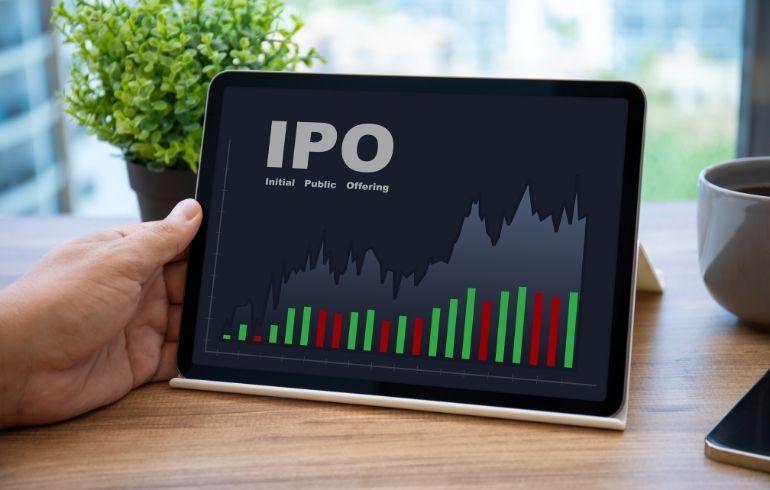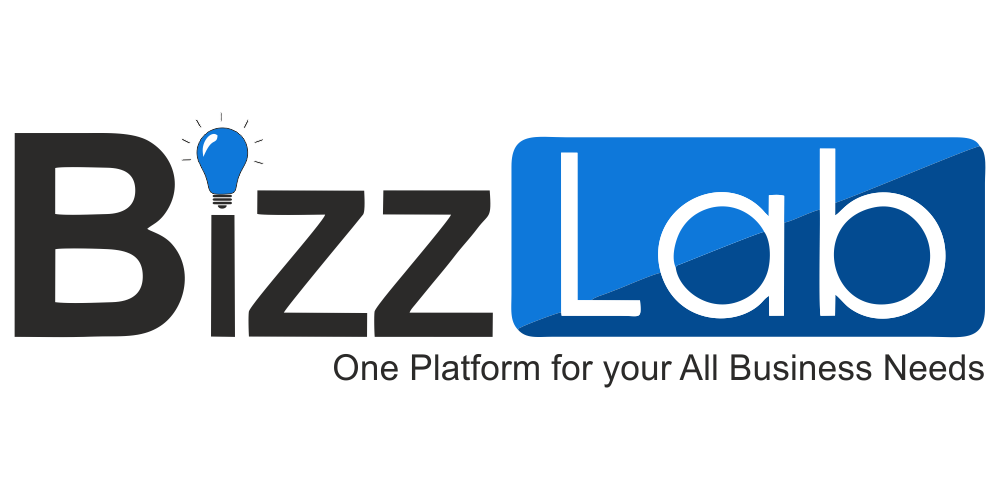
IPO - What is IPO - How it Works
IPO stands for "Initial Public Offering." It is a significant financial event in which a private company offers its shares to the public for the first time. When a company decides to go public through an IPO, it transforms from a privately held entity, where ownership is limited to a relatively small group of investors, into a publicly traded company, whose shares are available for purchase by anyone in the open market.
An Initial Public Offering (IPO) is a complex process that involves multiple steps and key participants. Here is an overview of how an IPO works:
Preparation Phase:
- Hiring Advisors: The company seeking to go public typically hires a team of advisors, which may include investment banks, legal counsel, auditors, and underwriters. These advisors play a crucial role in guiding the company through the IPO process.
- Financial Disclosure: The company prepares its financial statements, including audited financials, and drafts a prospectus. The prospectus contains detailed information about the company’s financials, operations, risks, and business plan.
- Regulatory Compliance: The company must ensure that it complies with all regulatory requirements in the jurisdiction where it intends to go public. In the United States, for example, this involves working with the Securities and Exchange Commission (SEC).
Registration and Filing:
- The company files the necessary documents with the relevant regulatory authority, such as the SEC in the U.S., to register the IPO. These documents include the prospectus and other required disclosures.
- The regulatory authority reviews the registration statement and may provide comments or request revisions to ensure that investors have access to all material information.
Pricing the IPO:
- The company, in consultation with its underwriters (investment banks), determines the offering price for its shares. This price is typically based on various factors, including the company’s financial performance, industry benchmarks, and market conditions.
- The underwriters also help the company decide how many shares to issue to the public.
Roadshow:
- Before the IPO, the company and its underwriters conduct a “roadshow.” This involves presentations to potential investors, such as institutional investors, analysts, and other market participants. The goal is to generate interest in the IPO and to gauge investor appetite for the shares.
Allocation and Distribution:
- Once the offering price is determined and orders from investors have been collected, the underwriters allocate shares. They decide how many shares will be allocated to institutional investors and retail investors.
- The underwriters often provide some of the shares to their clients or take on the risk of holding unsold shares.
IPO Day:
- The company’s shares are listed on a stock exchange, and trading begins. Typically, there is an initial “pop” in the stock’s price as it enters the public market.
Post-IPO Life:
- After the IPO, the company becomes a publicly traded entity, and its shares are traded on the stock exchange. The company is subject to ongoing regulatory requirements, including regular financial reporting and disclosure of material events.
- Shareholders, both new and existing, can buy and sell shares on the open market.
Initial Public Offerings (IPOs) have a long history dating back centuries. The concept of raising capital by offering shares to the public has evolved over time, reflecting changes in financial markets, regulations, and investor sentiment. Here is a brief history of IPOs:
Dutch East India Company (1602):
- Often considered one of the earliest examples of an IPO, the Dutch East India Company (VOC) issued shares to the public in 1602 in order to fund its voyages and trading ventures. The VOC is considered one of the world’s first multinational corporations.
London Stock Exchange (1698):
- The London Stock Exchange was established in 1698, providing a formal marketplace for trading shares. This marked the beginning of organized securities exchanges.
Railroad Boom (19th Century):
- The 19th century saw a significant surge in IPO activity, particularly in the United States, as railroad companies sought public funding to build infrastructure. This period marked the start of modern stock markets in the U.S.
Great Depression (1930s):
- The stock market crash of 1929 and the subsequent Great Depression led to increased regulation and the formation of the U.S. Securities and Exchange Commission (SEC) in 1934 to restore investor confidence and protect against fraud and market manipulation.
Dot-Com Bubble (Late 1990s – Early 2000s):
- The late 1990s witnessed the dot-com bubble, characterized by a frenzy of IPOs for internet-related companies. While many companies went public and saw their stock prices soar, the bubble eventually burst in the early 2000s, leading to significant losses for investors.
Recent Trends (21st Century):
- The 21st century has seen a wide range of IPO activity, including the IPOs of tech giants like Google (2004), Facebook (2012), and Alibaba (2014). Additionally, the introduction of special purpose acquisition companies (SPACs) has provided an alternative path to going public.
Globalization and Technology:
- Advances in technology, communication, and the globalization of financial markets have made it easier for companies to access a global pool of investors and go public on multiple exchanges.
Regulatory Changes:
- Regulatory frameworks for IPOs have evolved over time to adapt to changing market conditions and to protect investors. For example, the Sarbanes-Oxley Act (2002) in the U.S. introduced significant corporate governance and accounting reforms in response to accounting scandals like Enron.
Investing in an Initial Public Offering (IPO) can be an exciting opportunity to become an early shareholder in a newly publicly traded company. However, it also carries certain risks and considerations. Here are some key points to keep in mind when considering investing in an IPO:
1. Understand the Company and Industry:
- Thoroughly research the company going public and its industry. Understand its business model, competitive position, growth prospects, and risks. A company’s prospectus, typically available before the IPO, contains important information.
2. Evaluate the Offering Price:
- Assess whether the offering price is reasonable. Consider valuation metrics, such as price-to-earnings (P/E) ratio, and compare them to industry benchmarks and competitors.
3. Market Conditions:
- Consider the overall market conditions. IPO performance can be influenced by the broader market’s sentiment and conditions. Timing is crucial.
4. Assess the Management Team:
- Review the experience and track record of the company’s management team. Strong leadership is often a positive indicator of a company’s ability to execute its business plan.
5. Risks and Challenges:
- Be aware of the potential risks and challenges associated with the company, industry, and market. Risks should be disclosed in the prospectus.
6. Financials and Performance:
- Analyze the company’s financial statements and performance metrics. Look for signs of profitability, revenue growth, and a strong balance sheet.
7. Corporate Governance and Transparency:
- Evaluate the company’s corporate governance practices and level of transparency. Good governance can help protect the interests of shareholders.
8. Prospectus and Disclosures:
- Read the company’s prospectus carefully. It contains essential information about the IPO, including risks, use of proceeds, and financial data.
9. Assess Your Investment Goals:
- Consider your own investment goals and risk tolerance. IPOs can be volatile, so make sure your investment aligns with your overall portfolio strategy.
10. Diversify Your Portfolio:
- Avoid putting all your investment capital into a single IPO. Diversification helps spread risk and can protect your overall portfolio.
11. Watch for Lock-Up Periods:
- Many early investors, including company insiders and employees, may be subject to lock-up periods during which they are prohibited from selling shares. Be aware of when these restrictions expire.
12. Monitor Post-IPO Performance:
- After investing, closely monitor the company’s post-IPO performance and financial results. Be prepared to make adjustments to your investment strategy as needed.
13. Consider Long-Term Prospects:
- Think about your investment horizon. While some investors seek to profit from short-term price movements, others invest in IPOs with a long-term perspective.
14. Consult Financial Advisors:
- Seek advice from financial professionals, such as investment advisors or financial planners, who can provide guidance tailored to your individual financial situation and goals.
The Initial Public Offering (IPO) process is a multi-step procedure that a private company undergoes to become a publicly traded company, allowing it to raise capital by selling shares to the general public. The specific steps and details may vary depending on the company’s location and regulatory environment, but here is a general overview of the IPO process:
Preparation Phase:
a. Engage Advisors: The company, often with the assistance of financial advisors, legal counsel, underwriters, and auditors, selects a team of professionals to help guide it through the IPO process.
b. Financial Disclosure: The company prepares its financial statements, including audited financials, and drafts a prospectus. The prospectus contains detailed information about the company’s financials, operations, risks, business model, and the offering itself.
c. Regulatory Compliance: The company must ensure that it complies with all regulatory requirements in the jurisdiction where it plans to go public. In the United States, for example, this involves working with the Securities and Exchange Commission (SEC).
Registration and Filing:
a. The company files the necessary documents, including the prospectus, with the relevant regulatory authority, such as the SEC in the U.S., to register the IPO.
b. The regulatory authority reviews the registration statement and may provide comments or request revisions to ensure that investors have access to all material information.
Pricing the IPO:
a. The company, in consultation with its underwriters (investment banks), determines the offering price for its shares. This price is typically based on various factors, including the company’s financial performance, industry benchmarks, and market conditions.
b. The underwriters also help the company decide how many shares to issue to the public.
Roadshow:
a. Before the IPO, the company and its underwriters conduct a “roadshow.” This involves presentations to potential investors, such as institutional investors, analysts, and other market participants. The goal is to generate interest in the IPO and to gauge investor appetite for the shares.
Allocation and Distribution:
a. Once the offering price is determined and orders from investors have been collected, the underwriters allocate shares. They decide how many shares will be allocated to institutional investors, retail investors, and other parties.
b. The underwriters often provide some of the shares to their clients or take on the risk of holding unsold shares.
IPO Day:
a. On the day of the IPO, the company’s shares are listed on a stock exchange, and trading begins. Typically, there is an initial “pop” in the stock’s price as it enters the public market.
Post-IPO Life:
a. After the IPO, the company becomes a publicly traded entity, and its shares are traded on the stock exchange. The company is subject to ongoing regulatory requirements, including regular financial reporting and disclosure of material events.
b. Shareholders, both new and existing, can buy and sell shares on the open market.
An Initial Public Offering (IPO) is a significant financial event for a company, and it offers both advantages and disadvantages. Here’s an overview of the pros and cons of going public through an IPO:
Advantages of an IPO:
Access to Capital:
- Advantage: An IPO allows a company to raise substantial capital by selling shares to the public, which can be used for various purposes, such as expansion, debt reduction, research and development, and acquisitions.
Liquidity for Owners and Investors:
- Advantage: Founders, early investors, and employees can monetize their investments by selling shares, providing liquidity. This can also incentivize employees with stock options.
Increased Visibility and Credibility:
- Advantage: Going public can enhance a company’s profile and credibility, making it more attractive to customers, suppliers, and partners.
Currency for Acquisitions:
- Advantage: Publicly traded stock can be used as a currency for acquisitions, making it easier to pursue growth through mergers and acquisitions.
Employee Stock-Based Compensation:
- Advantage: Stock options and grants can be used to attract and retain talent, aligning employee interests with the company’s success.
Exit Strategy for Early Investors:
- Advantage: Early investors, including venture capitalists, can achieve an exit strategy by selling their shares in the open market, potentially realizing substantial returns.
Transparency and Governance:
- Advantage: Public companies are subject to regulatory oversight and must adhere to corporate governance standards, which can help improve transparency and accountability.
Disadvantages of an IPO:
Cost and Complexity:
- Disadvantage: The IPO process is costly and complex, involving various fees, legal and accounting expenses, and time-consuming regulatory compliance.
Loss of Control:
- Disadvantage: Going public may lead to a loss of control for the company’s founders and early management as shareholders have a say in the company’s decisions.
Short-Term Focus:
- Disadvantage: Publicly traded companies may face pressure to meet short-term financial targets, potentially compromising long-term strategic planning.
Regulatory Compliance:
- Disadvantage: Public companies are subject to stringent regulatory requirements, such as financial reporting, disclosure, and investor relations, which can be time-consuming and costly.
Market Volatility:
- Disadvantage: Stock prices can be subject to market fluctuations, and the company may be under pressure to manage investor expectations, even if they don’t align with the company’s long-term goals.
Risk of Litigation:
- Disadvantage: Public companies may face an increased risk of shareholder lawsuits, especially if there are stock price declines or allegations of financial misconduct.
Loss of Privacy:
- Disadvantage: Public companies must disclose a significant amount of information, including financial data and operational details, which may expose sensitive business information to competitors.
Management Distractions:
- Disadvantage: The IPO process and the ongoing demands of being a public company can be a significant distraction for management.
While an Initial Public Offering (IPO) is one way for a private company to become a publicly traded entity and raise capital, there are several alternative methods for achieving similar goals. These alternatives can be more flexible and efficient, depending on a company’s specific circumstances and objectives. Here are some common IPO alternatives:
Direct Listing:
- In a direct listing, a company goes public without raising capital through new share issuance or engaging in an underwritten offering. Instead, existing shares held by insiders and employees are made available for trading on a stock exchange.
- Advantages: No need to dilute existing shareholders or incur underwriting fees. Provides liquidity for existing shareholders.
- Challenges: May not raise new capital for the company, and there is no built-in mechanism to set an initial trading price.
Special Purpose Acquisition Company (SPAC):
- A SPAC, also known as a “blank-check company,” is formed solely for the purpose of raising capital through an IPO with the intent of acquiring an existing private company. Once the SPAC goes public, it has a specified period to complete a merger or acquisition.
- Advantages: Provides an alternative route to going public, often with a shorter timeline. The merger process can be more efficient than a traditional IPO.
- Challenges: SPACs have faced increased regulatory scrutiny, and investors may be exposed to more risk, as the target company is unknown at the time of the SPAC’s IPO.
Secondary Market Transactions:
- Companies can sell shares on the secondary market, such as through private placements, to raise capital without going through the IPO process.
- Advantages: More control over pricing and timing. Less public scrutiny and regulatory compliance.
- Challenges: Limited access to a broader investor base, and it may be challenging to find willing buyers in private placements.
Private Equity and Venture Capital:
- Companies can continue to raise capital from private equity and venture capital firms. Private financing rounds can provide ongoing funding for growth.
- Advantages: More flexibility in terms of equity structure and fewer regulatory requirements.
- Challenges: Limited liquidity for existing shareholders, and the company may face pressure to provide an exit strategy for investors.
Crowdfunding:
- In certain jurisdictions, equity crowdfunding platforms allow companies to raise capital from a large number of individual investors.
- Advantages: Access to a diverse group of investors. Simplified regulatory requirements for smaller offerings.
- Challenges: Limited capital compared to traditional equity offerings. Complex regulatory compliance.
Regulation A+ Offering:
- Under the U.S. JOBS Act, Regulation A+ allows companies to raise capital from both accredited and non-accredited investors through a mini-IPO with simplified regulatory requirements.
- Advantages: Broader investor base. Reduced regulatory burden compared to a traditional IPO.
- Challenges: Limited capital raising potential compared to a traditional IPO.
Strategic Partnerships and Alliances:
- Companies can form strategic partnerships, joint ventures, or alliances with established firms that provide capital and market access.
- Advantages: Can provide funding, distribution, and other strategic advantages.
- Challenges: Loss of some control and potential conflicts of interest.
The performance of Initial Public Offerings (IPOs) can vary widely, and it largely depends on various factors, including market conditions, the specific company, its industry, and the timing of the IPO. Here are some common trends and considerations related to the performance of IPOs:
1. Short-Term Volatility:
- IPOs often experience short-term price volatility immediately after going public. There may be an initial “pop,” where the stock price rises above the offering price due to high demand, followed by a period of potential price declines.
2. Market Conditions:
- IPO performance can be significantly influenced by broader market conditions. A strong bull market can enhance the performance of IPOs, while economic downturns or bear markets can lead to less favorable outcomes.
3. Size and Profile of the Company:
- Larger, well-established companies with strong financials and market recognition tend to have more successful IPOs compared to smaller or less-known companies.
4. Industry Trends:
- Certain industries may be more attractive to investors, and IPOs in these sectors may perform better. For example, technology companies often generate significant investor interest.
5. Valuation:
- The offering price relative to the company’s financials, earnings, and industry benchmarks can significantly impact performance. Overly optimistic valuations can lead to disappointing post-IPO results.
6. Profitability and Growth Potential:
- Companies with a track record of profitability and a clear growth strategy may perform better in the long term.
7. Timing:
- The timing of the IPO can be crucial. Companies may need to choose the right window of opportunity when market sentiment is positive.
8. Company-Specific Factors:
- The company’s unique business model, competitive advantages, management team, and industry leadership can affect IPO performance.
9. Post-IPO Management:
- How the company is managed post-IPO, including its ability to meet financial targets and execute its business plan, can significantly influence performance.
10. Lock-Up Period Expirations:
- When lock-up periods for insiders and early investors expire, additional shares may enter the market, potentially affecting the stock’s performance.
11. Analyst Coverage and Investor Sentiment:
- Analyst coverage and investor sentiment can impact the stock’s performance. Positive recommendations from analysts and favorable investor sentiment can drive demand.
12. Long-Term Performance:
- The long-term performance of IPOs can vary. Some companies maintain or even increase their value over time, while others may underperform and struggle to meet investor expectations.
13. Investor Diversification:
- Diversifying your IPO investments across various companies and industries can help manage risk and capture potential returns from multiple sources.
14. Due Diligence:
- Conduct thorough due diligence and research before investing in an IPO. Read the company’s prospectus, consider its financials, and evaluate its growth potential and competitive positioning.



















